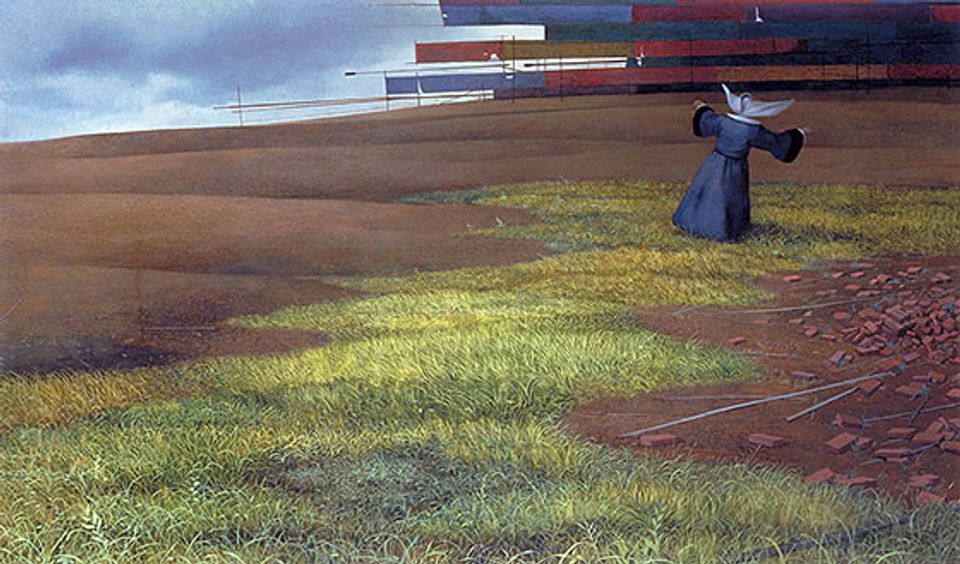

In 1952 Sara Roby established a foundation to encourage artists creating figurative works, at a time when Abstract Expressionism was the dominant force in the art world in the years following World War II. Esteemed art critic William Kloss recently spoke at the museum on the collection and the recently opened exhibition Modern American Realism: The Sara Roby Foundation Collection,. Sara Roby was a still life painter who studied with Reginald Marsh and Kenneth Hayes Miller, influential artists and instructors at the Art Students League in New York City. And although her collection is being presented under the title of American Realism, Roby looked at everything and often bought paintings and sculptures for the collection that defied categorization. "If you think you know what realism is," Kloss stated early on, "this exhibition may confound you."
Thus, Kloss coined the term RobyReal to define the delicate balancing act between the (mostly) real and the abstract, and it stuck. In fact, it was the title of his presentation, that covered an astonishing array of work. Along with the familiar names such as Edward Hopper, Arthur Dove (who wrote in an early journal that he liked to "work at the point where abstraction and reality meet"), and Will Barnet, the Roby Foundation Collection contains two- and three-dimensional works of art by a spectrum of artists from the famous to the little known.
Fear, by Robert Vickrey, painted in 1954, is a puzzle in the RobyReal sense. In this wildly imaginative landscape, a nun is seen running in distress away from a pile of rubble. But what does it mean, and does it have to mean anything? Is it real? abstract? or a curious hybrid of the two, forever known as RobyReal?
And if you're interested in what else William Kloss had to say about Sara Roby's collection, watch the webcast of his talk.

















